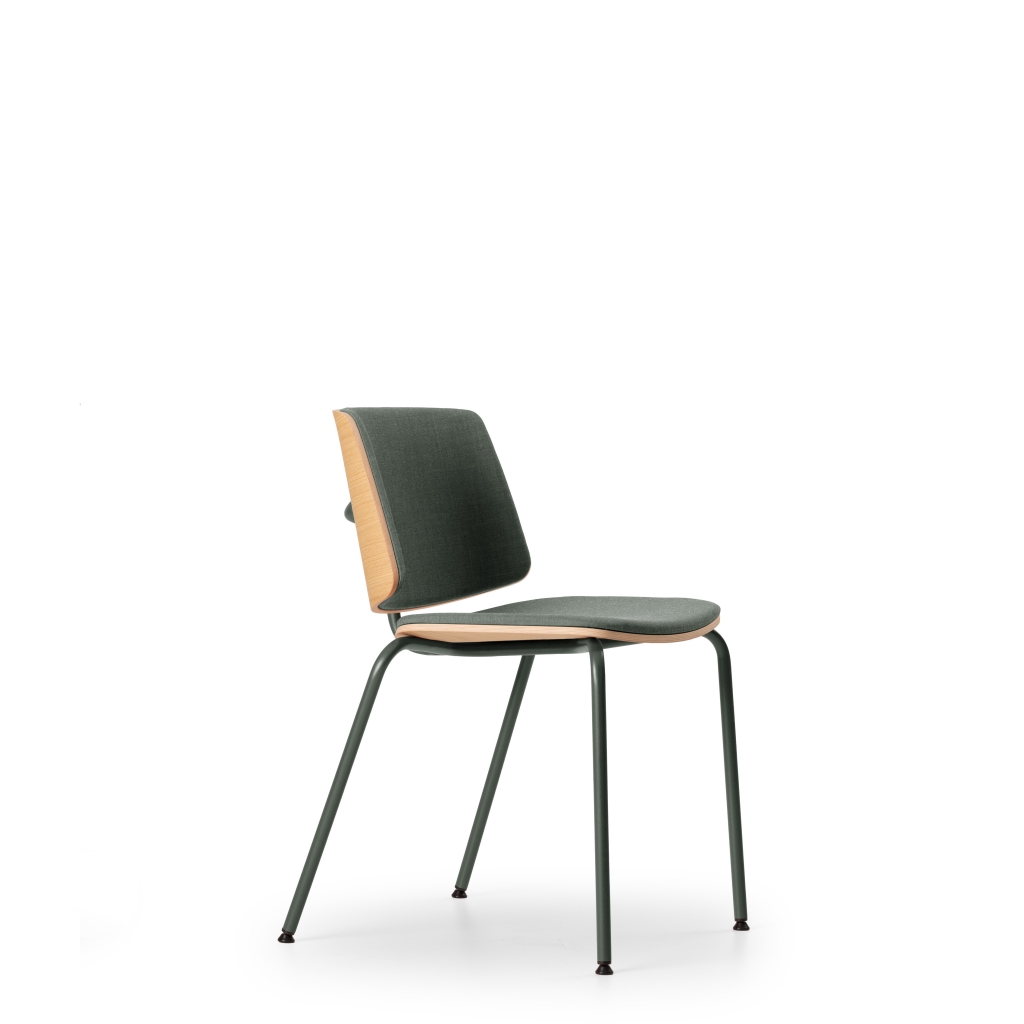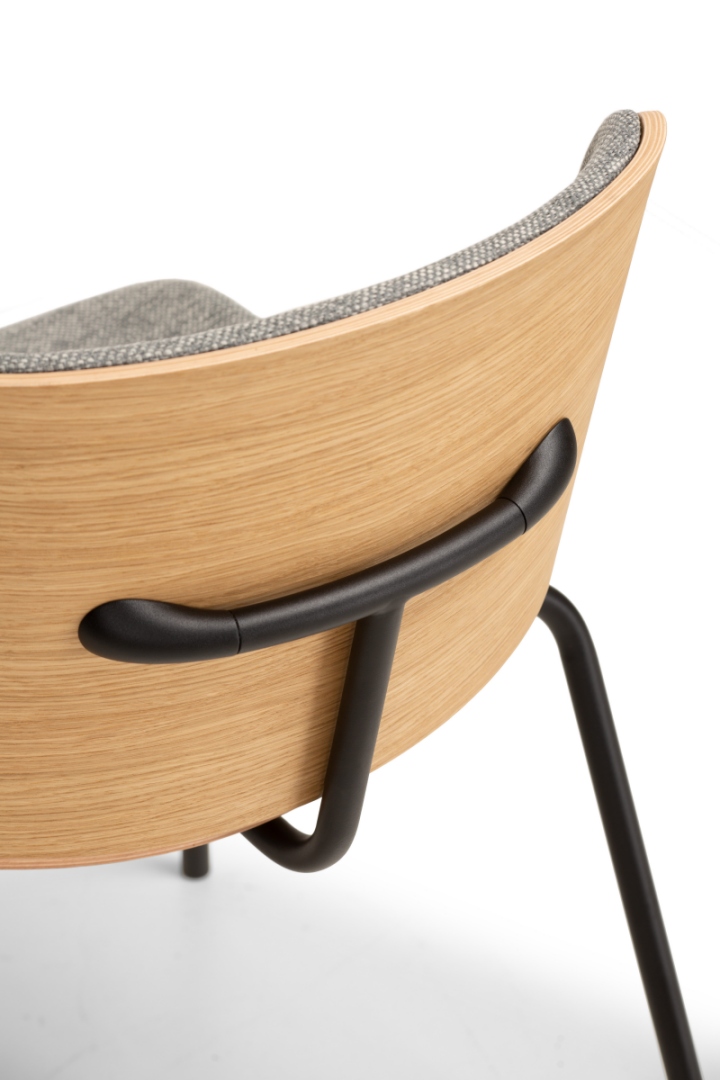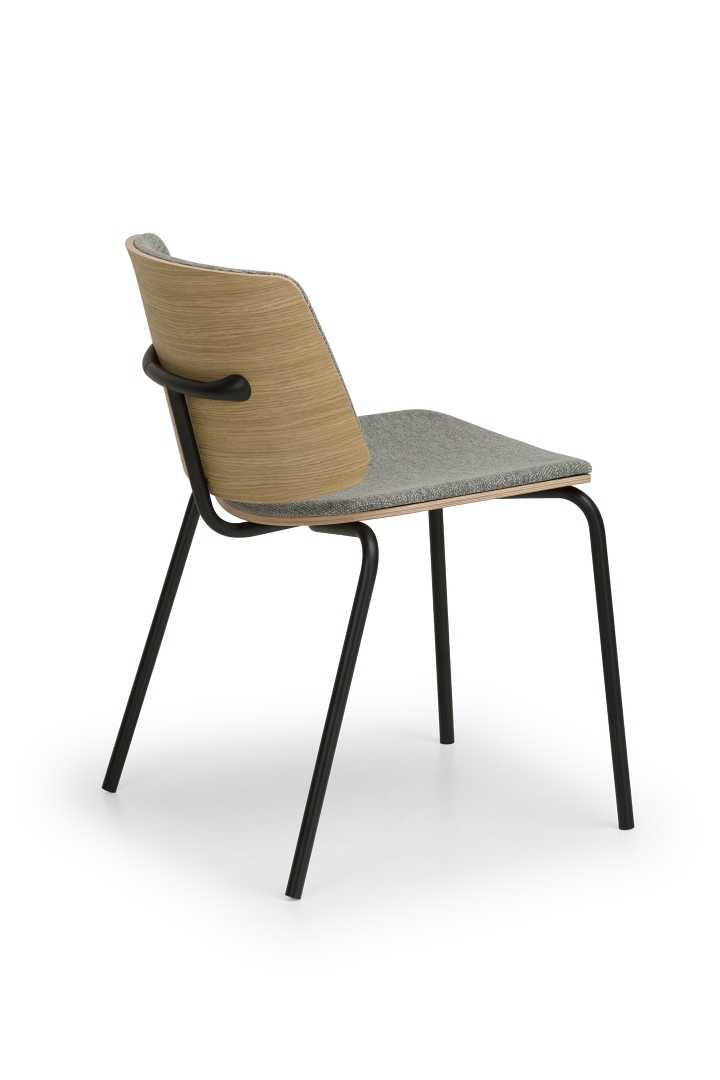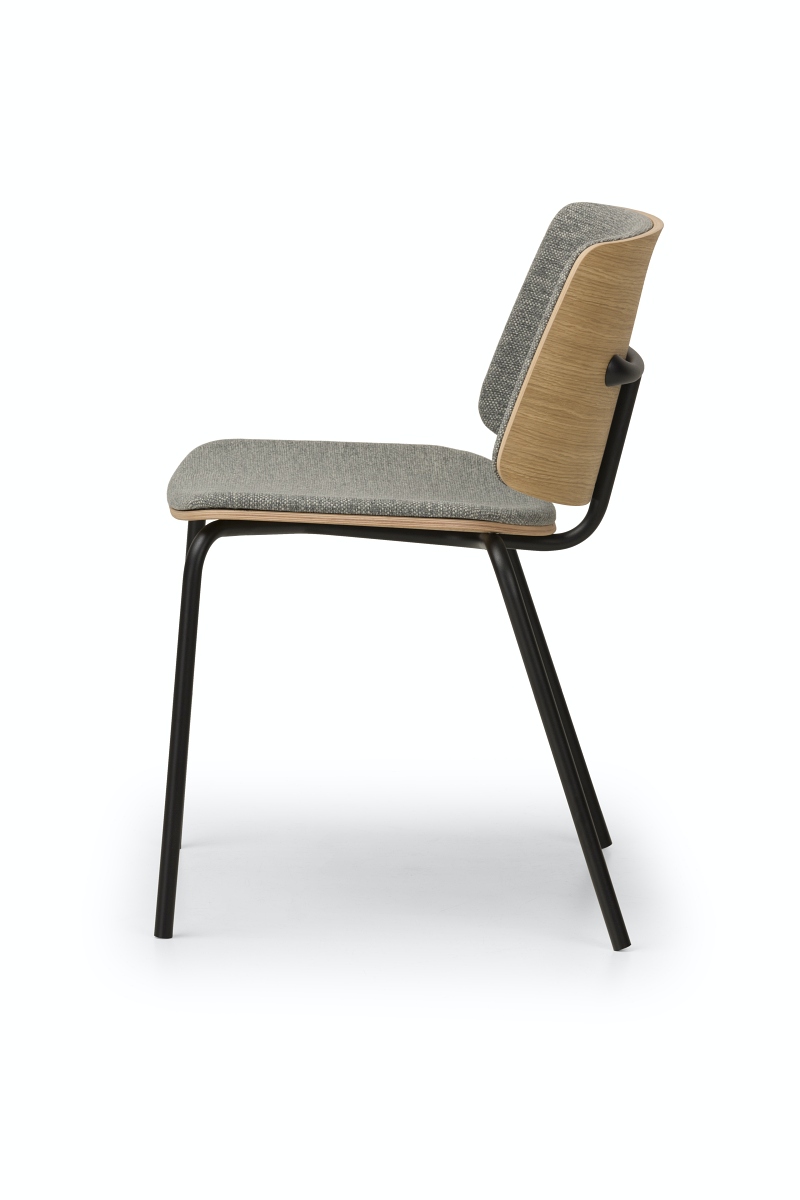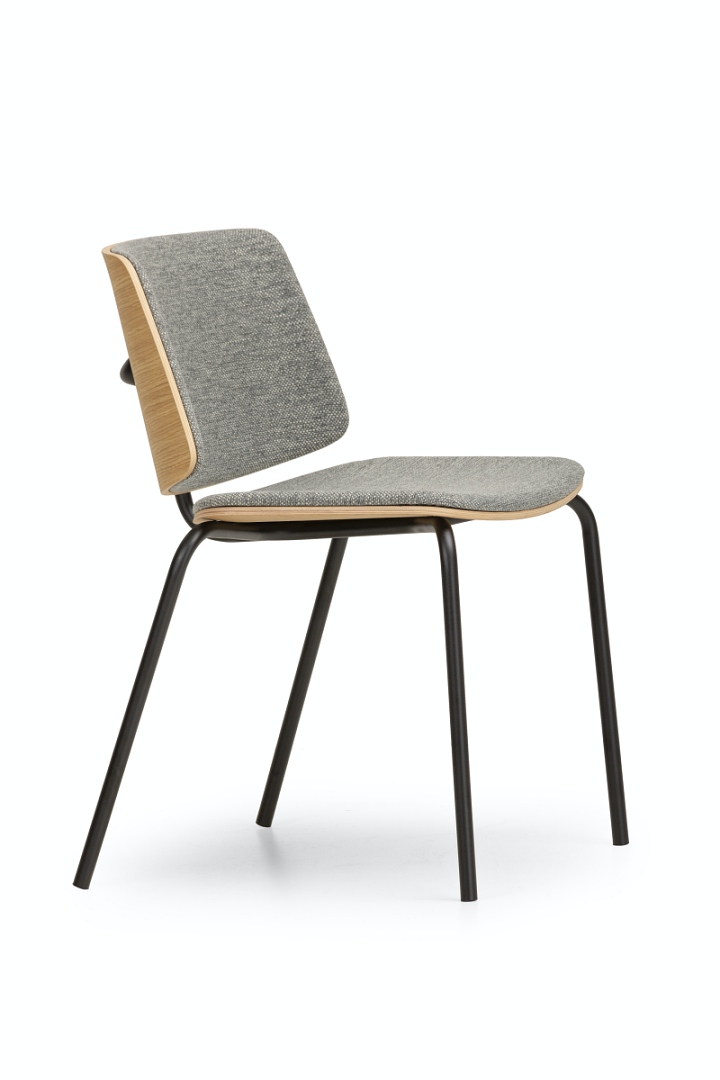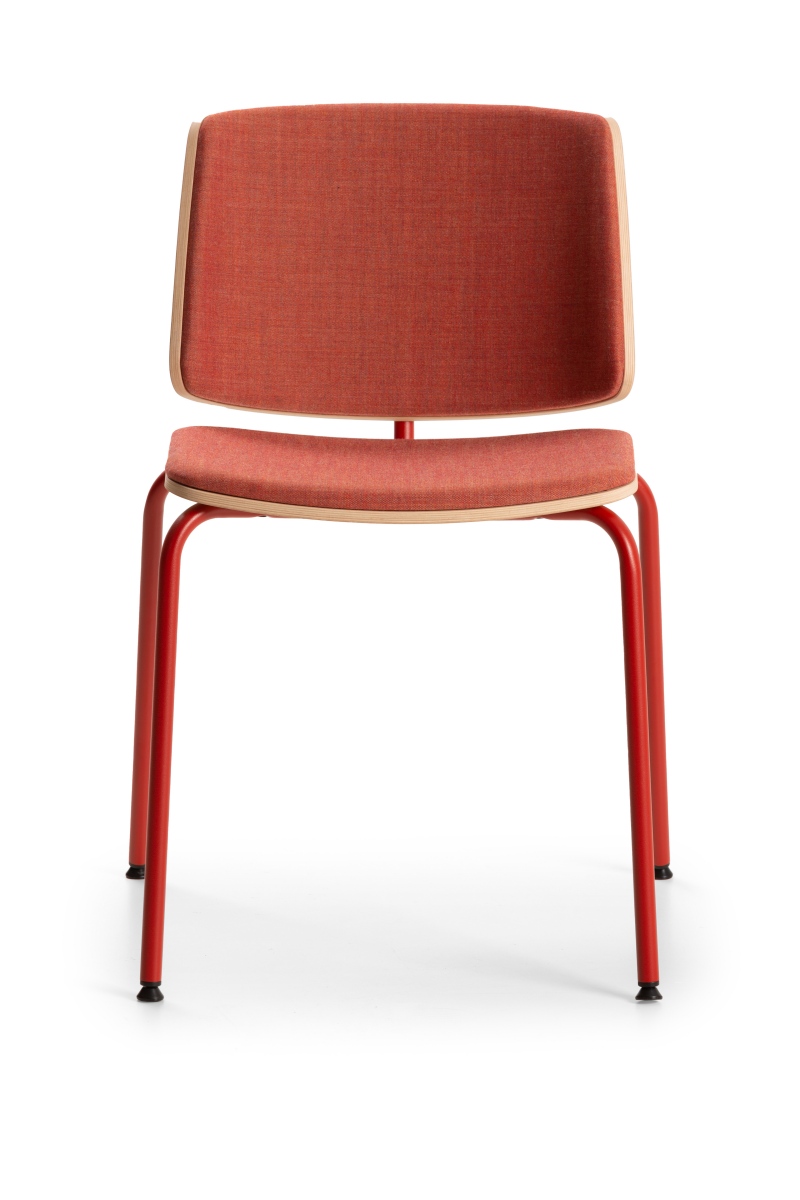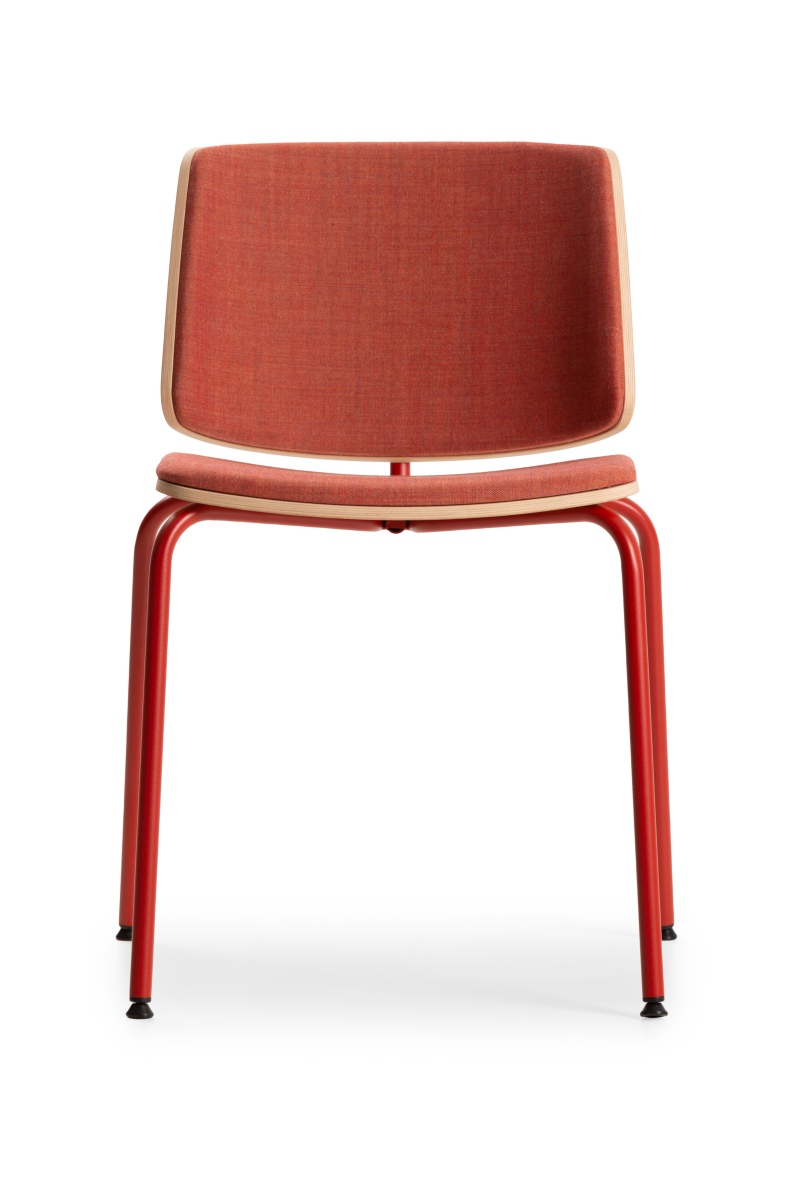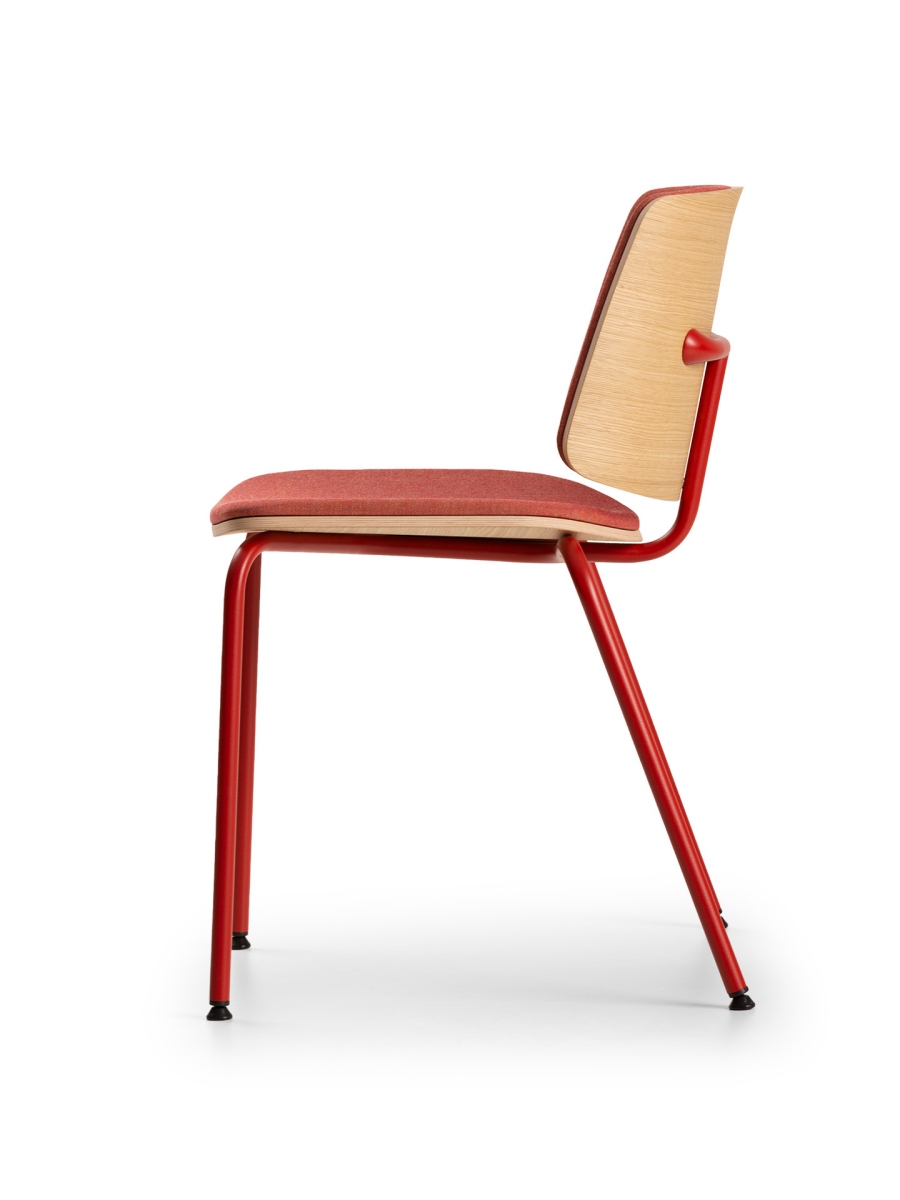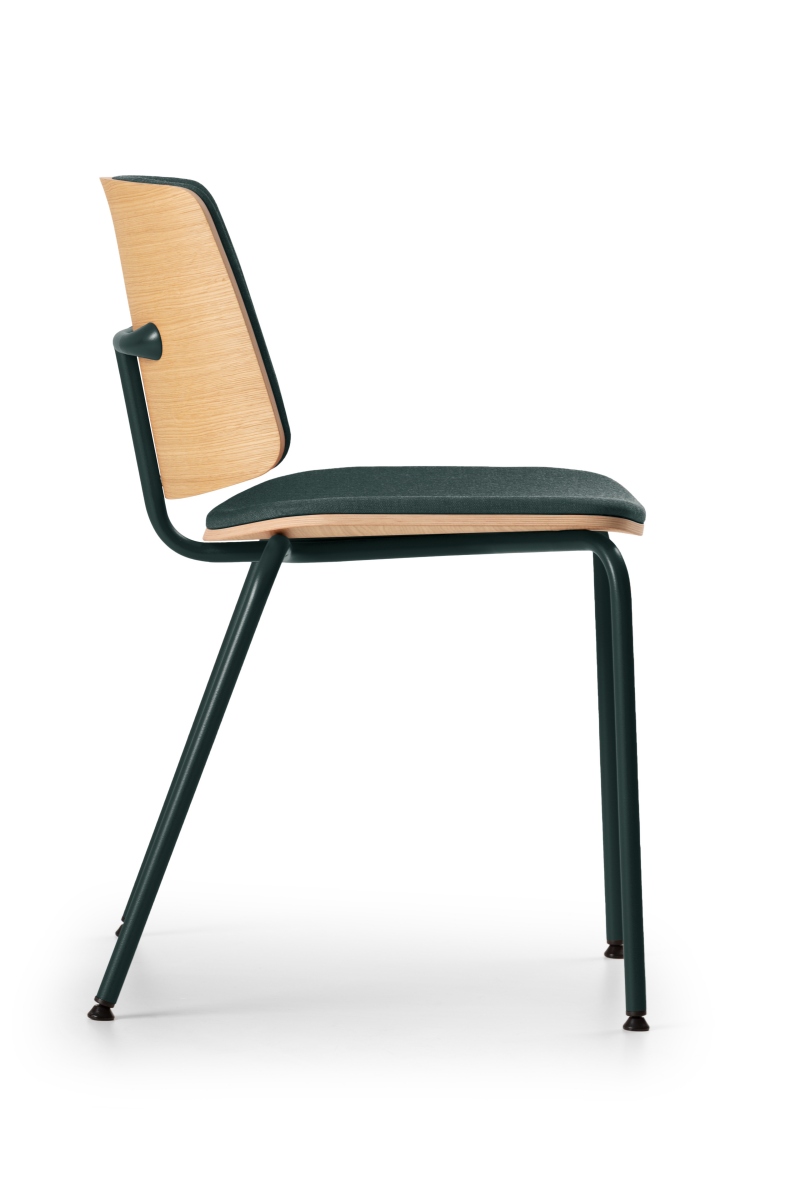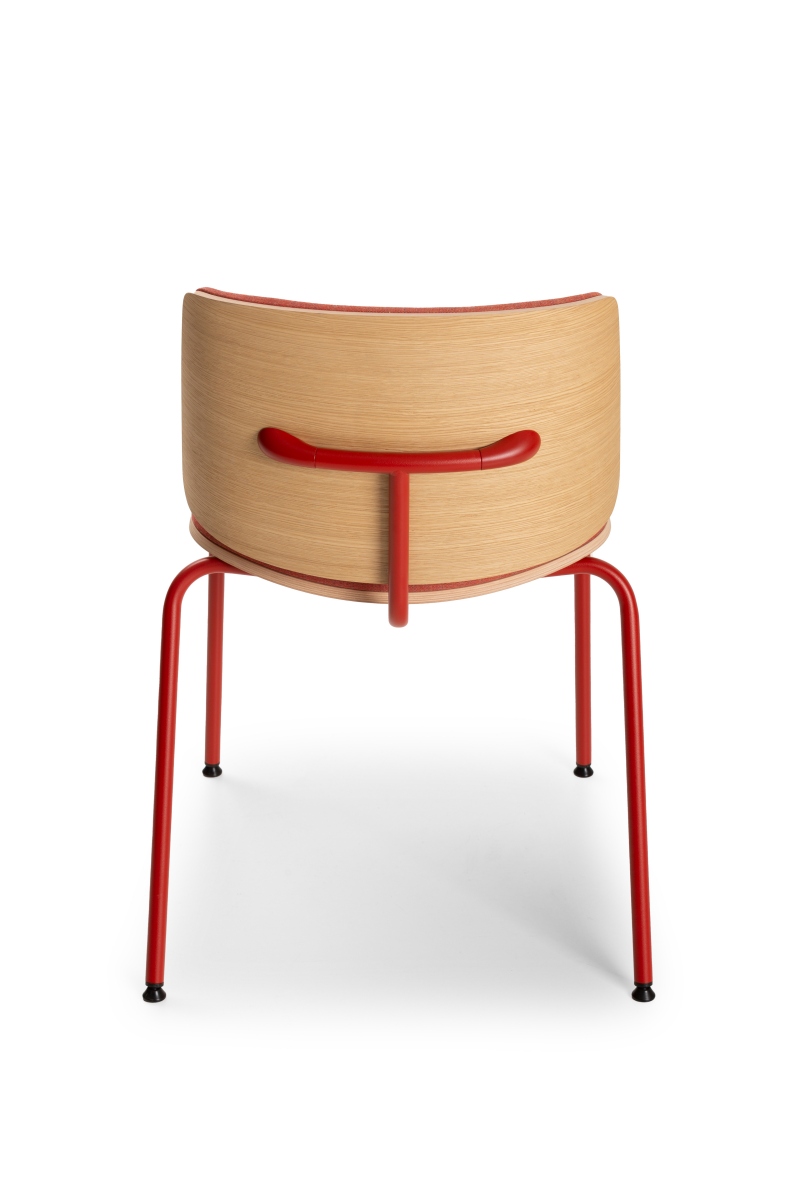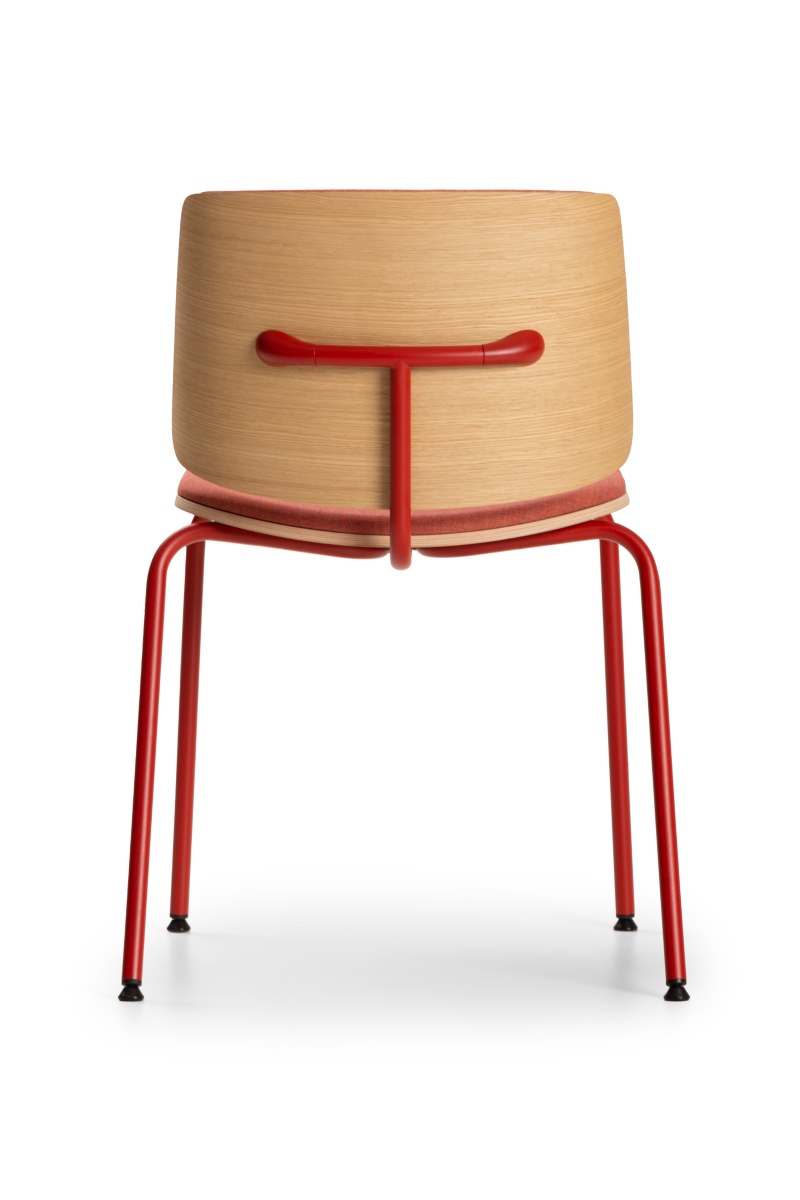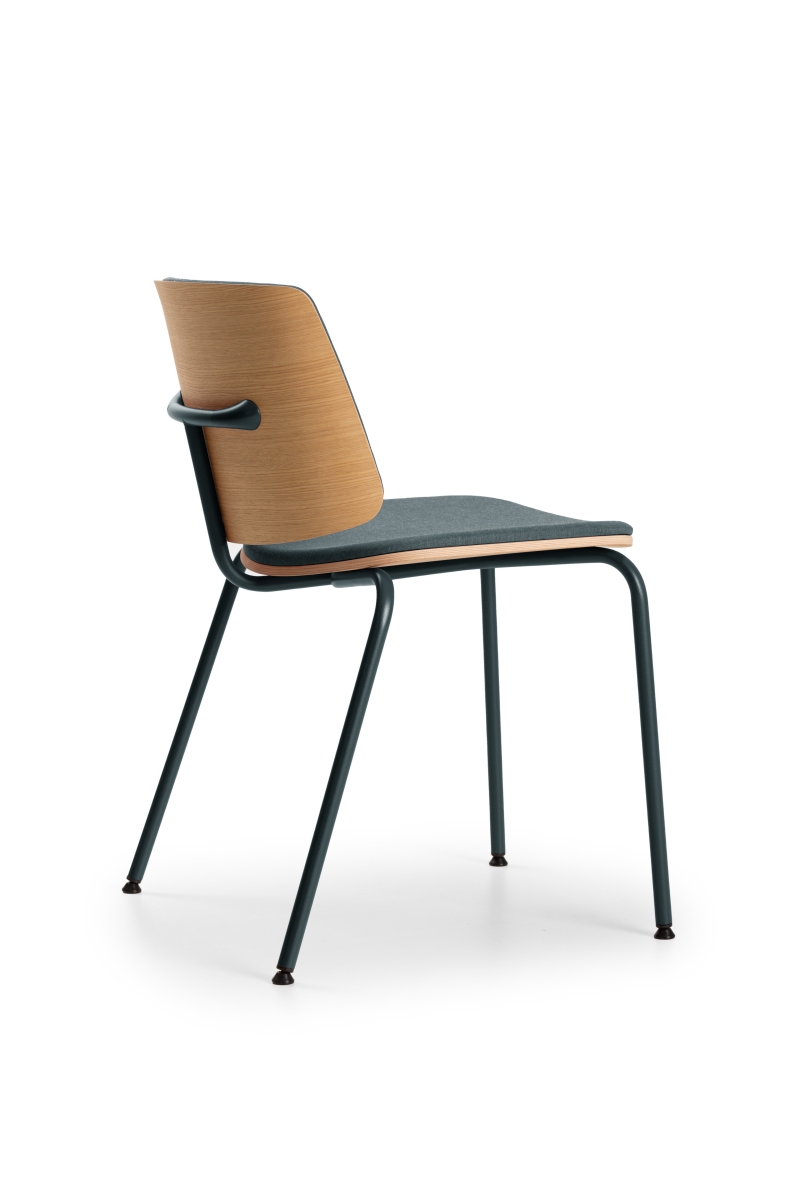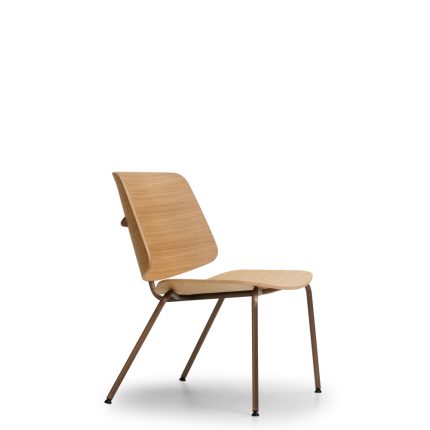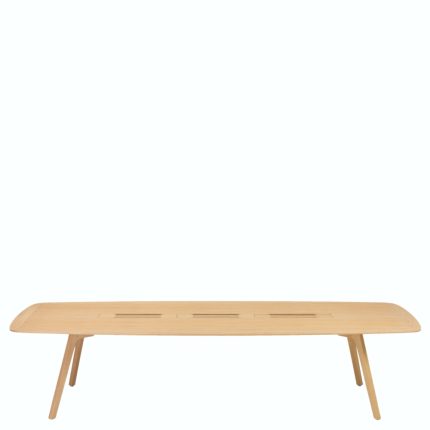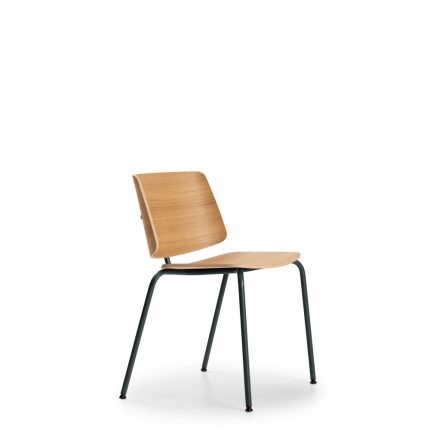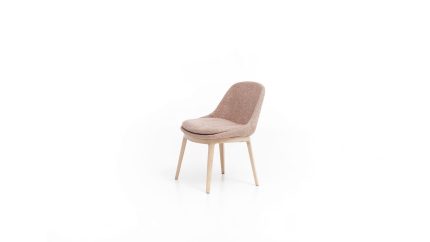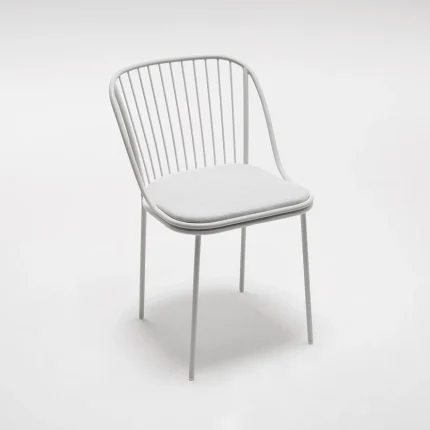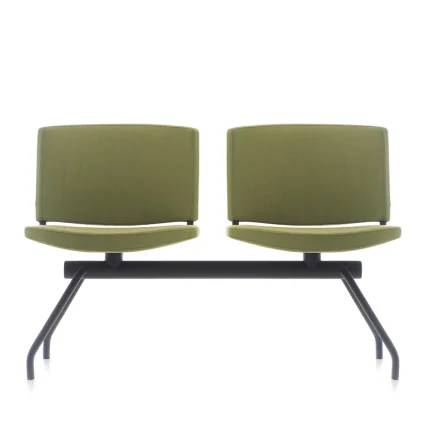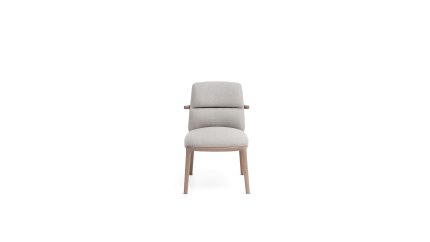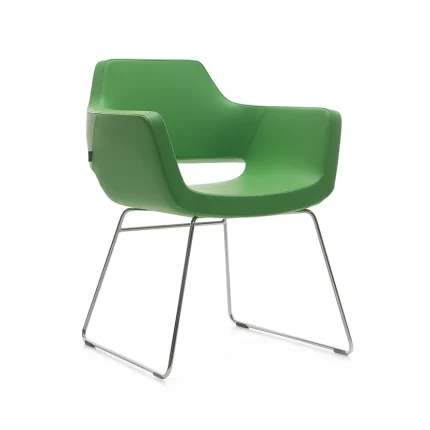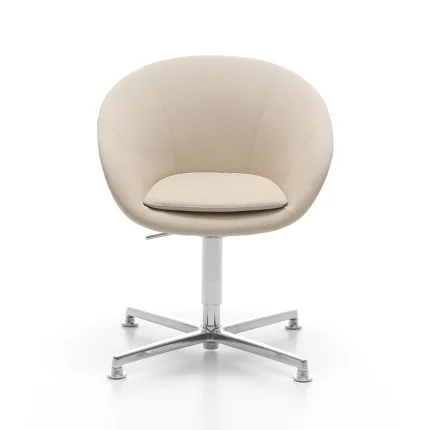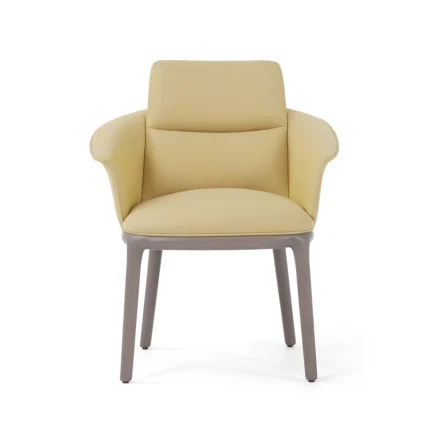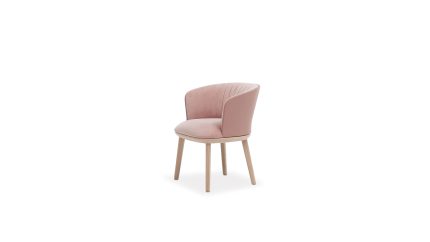Tao Side Chair | By Orlandini Design
TAO. The name of this chair reveals the core of the project.
In fact, it is precisely on the T-shaped support of the backrest that we have focused our attention on. At the root of the concept is clearly the recovery of a classic style, typical of the '50s and '60s design. The two wooden shells joined by the metal frame are an image that each of us has in our memory, from everyday examples such as school chairs or Nordic bistro chairs to Eames' immortal masterpieces.
Starting from this more than a consolidated solution, the focus of the intervention was on formal cleanliness and structural research until finding a supporting system narrowed to the essential, a sturdy and simple frame capable of conveying lightness, transforming the seat and backrest into two leaves suspended in the air, without screws or rivets as in past examples.
The two die-cast aluminum ends were the decisive choice, solving at the same time the backrest fixing system and resulting as the distinctive feature of the product. Tao is a strong and refined chair with a clean and friendly face but a sophisticated and pragmatic soul.
Tao Chairs Datasheet
Tao Chairs Catalog
Wood Finish Options

Metal Frame Finish Options

Dimensions (cm)
- Small Chair TA1004: Inches 21.6w | 20d | 30.3h
- Lounge Chair TA7004: Inches 26w | 30d | 31h
Easily Stackable
[embedyt] https://www.youtube.com/watch?v=yT8Kma1FKkI[/embedyt]

- The average lead time for True Design orders is 10 weeks.

Orlandini Design
Paolo Orlandini was born in Grosseto in 1941. He graduated from the Faculty of Architecture of the Polytechnic of Milan. He has worked for over ten years with the study of Marco Zanuso Sr. and with Richard Sapper.
From 1968 to 2010 he worked with Roberto Lucci in the areas of an office, chair, and kitchen design. Over 3 million chairs carry the signature Lucci Orlandini Design. Together they have designed over 500 products. Their design approach is based on the use of scale models and mock-ups of the real movement; generally on the direct experimentation on abstraction and concrete rather than digital.
He has performed and still teaches at the European Institute of Design, ISIA Rome, Milan Polytechnic, the Polytechnic School of Design in Milan, IUAV in Treviso.
True Design
Perhaps this is why a name has never been more appropriate, because it is the project of a family that means business and that, when it deals with issues relating to growth and trust in the new generations, probably does not even talk about it, but simply takes direct action. TRUE is a joint project: the project of a family that has become a company. Founded in 1983 under the name TMA, an interesting geographical acronym of three towns – Treviso, Monselice, and Asiago – particularly active in the furniture industry and, specifically, in the office furniture industry. The founders’ Donatella Brunello and Giuseppe Maniero business and technical experience resulted in a company with international prospects, in which seating for offices as well as theaters and cinemas were its only business. The increasingly high capacities achieved in the upholstered furniture sector and the downturn in the auditorium seating sector led the family to evaluate a new path: the creation of a company that carries forward the expertise acquired over the years, combined with the agility and freshness of a family business which since 2009 also includes the second generation of entrepreneurs, that is young Alessandro, Lorenzo, and Francesco Maniero. By virtue of necessity in that same year TRUE was founded, an Italian company that creates high-quality furnishings and accessories, able to respond to the changing needs of the market in an innovative and lasting manner, providing a service that can always effectively satisfy customer needs with industrial products which can be customized upon request. The spirit of the brand is contained in a single concise and precise adjective that reflects the values on which its collection is based, characterized by authenticity, practicality, and concreteness.
These same adjectives fit perfectly with the coherent and visionary, but also pragmatic, work of the architect Aldo Parisotto, who has been in charge of creative direction since 2014. Parisotto, an internationally renowned architect, co-founder, and owner of Parisotto+Formenton Architetti, immediately joined the TRUE family, with whom he established a direct, spontaneous, sincere, and substantial relationship. TRUE made a strategic choice when it assigned him a role halfway between designer and architect, able to collaborate without limiting himself to imprinting his own distinctive style, but working while taking into consideration the real needs of designers and the public worldwide. At the beginning of the new millennium, workplaces ceased to be places of mere production and became increasingly welcoming and comfortable spaces, where one could stay longer in contexts characterized by the need for emotion even more so than the function of the space itself. Enhancing this aspect by freeing space from the rigid dogmas of the architecture of the past was one of the first challenges that the Art Director faced with regard to the TRUE collections. Each of the company’s creations originates from the passion for the work and the profound sense of responsibility of those who work there, in a family atmosphere in which production increases and is developed. Aware of their role and the essential role of the designers, TRUE’s production is the result of a thorough analysis of the demands of both the market and international production, organized in an open and flexible manner, adopting cutting-edge methods and technologies, focusing on knowledge and training. And, above all, cooperation. In fact, cooperation was a fundamental criterion in the selection of the designers to whom the conception and development of the new TRUE collections are to be entrusted. The designers whose creative talents contribute to further enhancing the TRUE catalog are, therefore, chosen according to the affinity between their ethical and aesthetic approach and that of the company to transform wood, fabric, metals, and leather into furnishing accessories both beautiful and accessible that are exclusively manufactured in Italy. A decade after its inception, TRUE’s objective is to grow continuously in the name of research and innovation, and to expand and increasingly stand out on the international level due to the quality of its production and service, competitively consolidating its brand among the most important market segments. Because TRUE focuses on a passion for beautiful and well-performed work for the satisfaction of its customers, offering experience, expertise, capacity, and flexibility, to achieve a dream together, to help make spaces more pleasant and comfortable, with products that are durable both for their taste and for the quality of their materials and workmanship, and that are, therefore, truly sustainable.
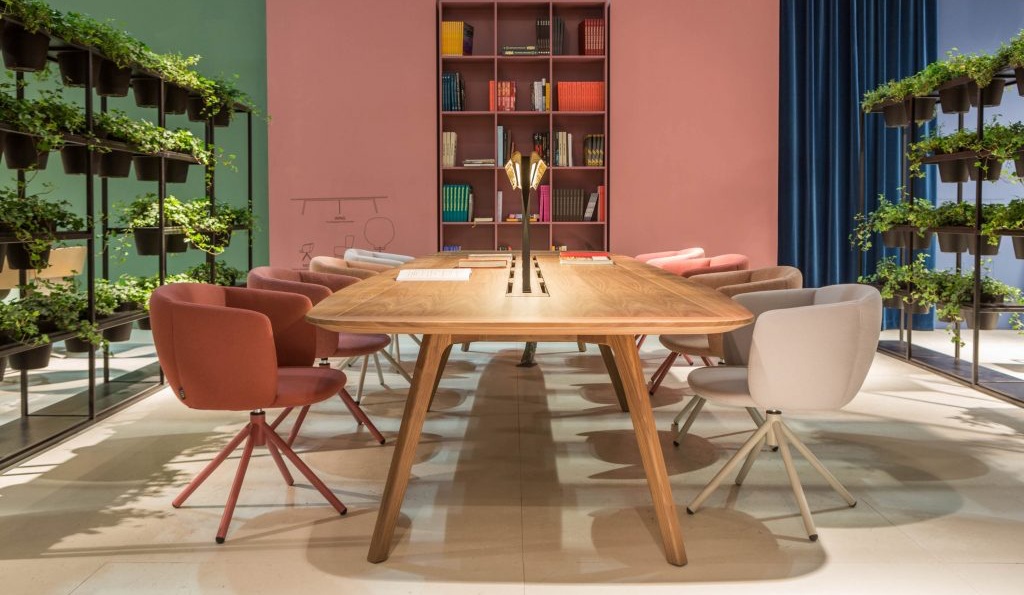
“What I’ve always heard from designers,
the good ones, is that a chair must be nice viewed from behind”
First of all, because in most cases the chairs are around a table, so the part that is visible is indeed the back
The second reason, more of a design and technical nature is that the fixing of the backrest to the structure has always been one of the most difficult knots to untie in the design of a chair.
[embedyt] https://www.youtube.com/watch?v=2gTQGQwHSjM[/embedyt]

